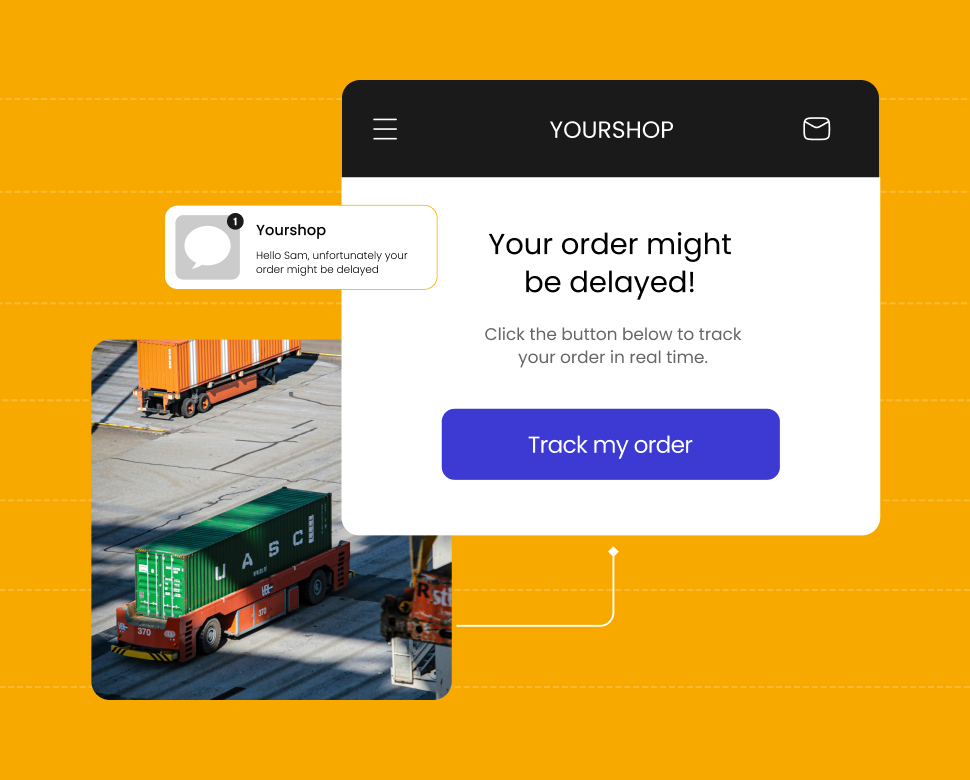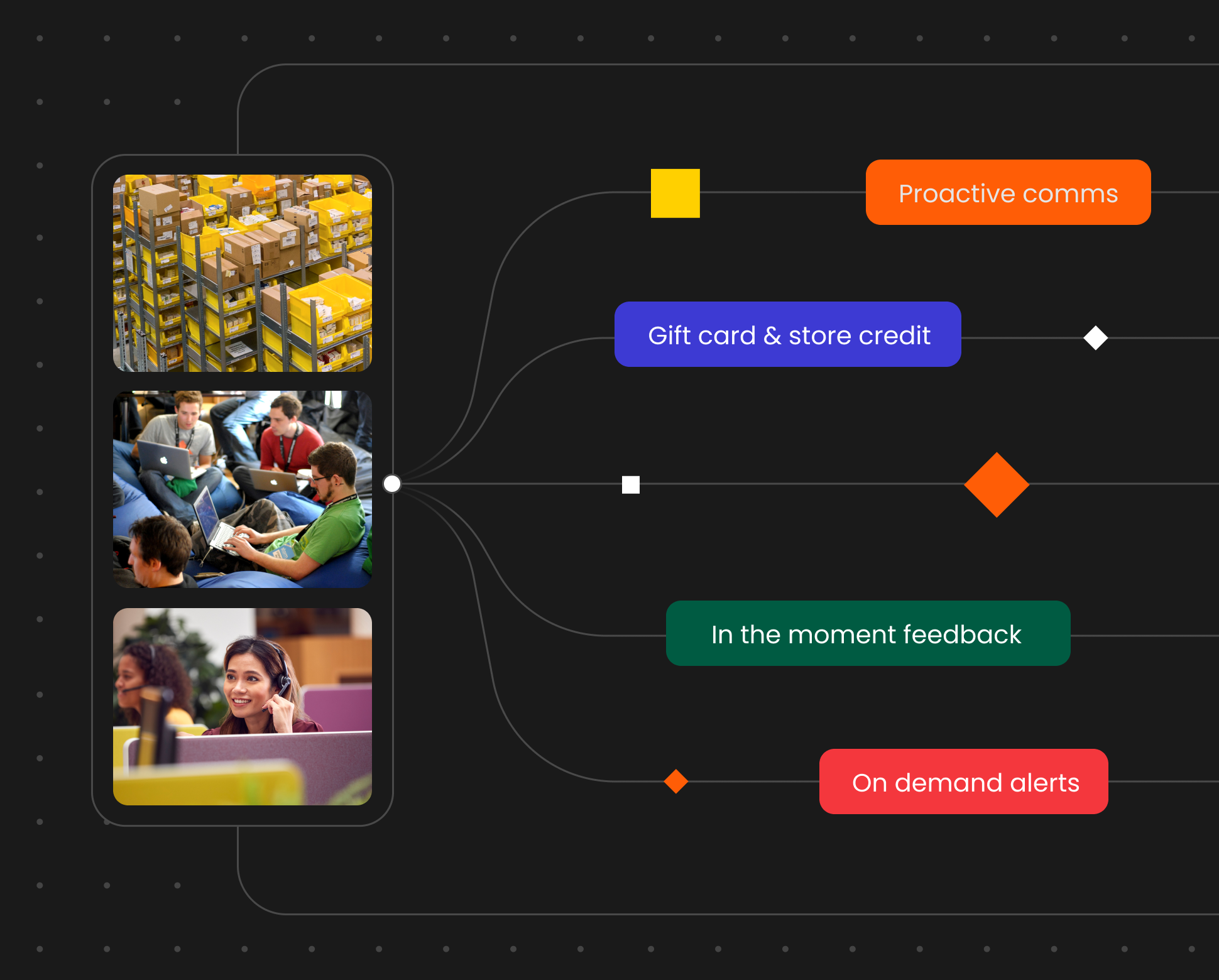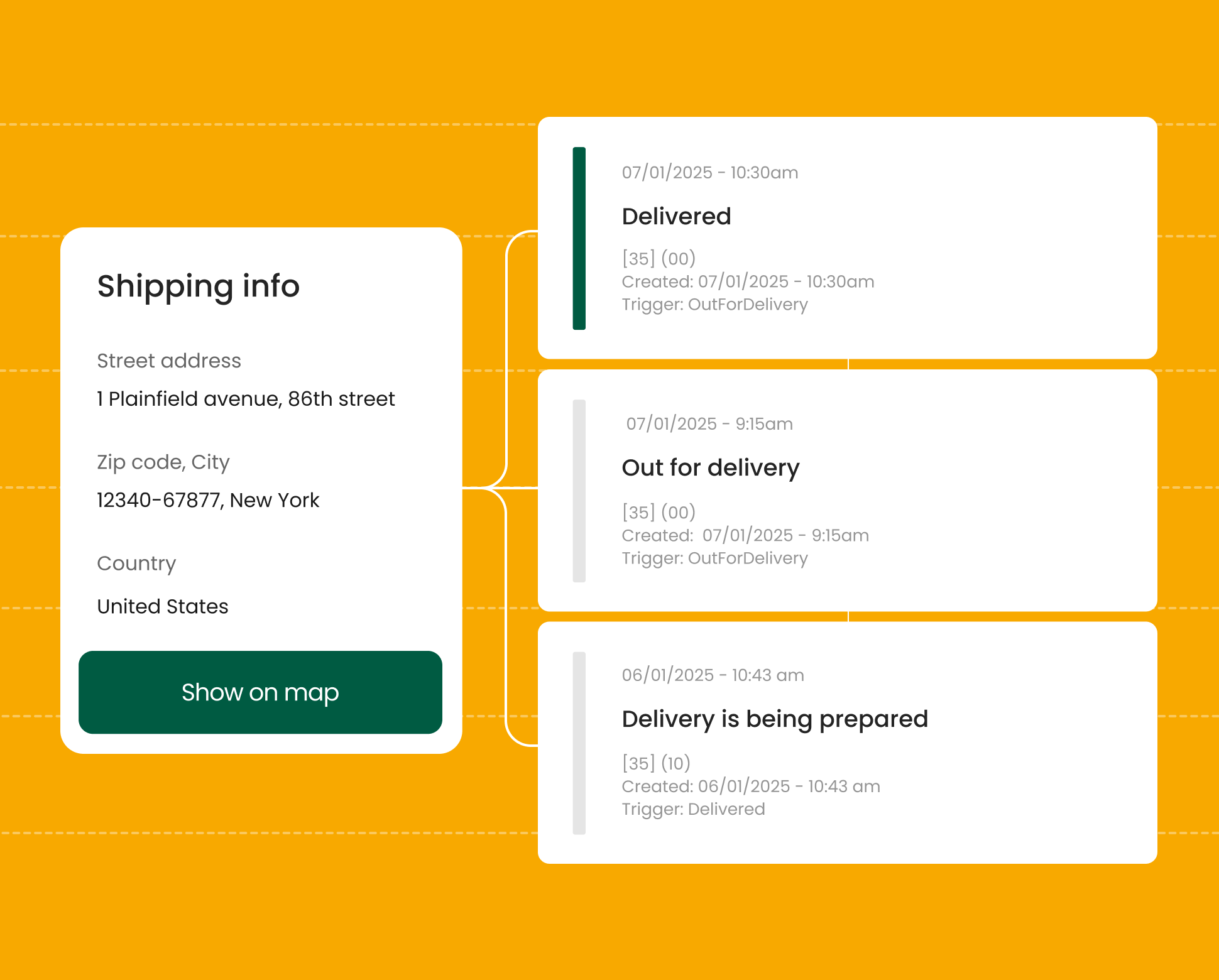How tariffs are reshaping retail from checkout to returns

Contents
Boost customer loyalty with a personalized post-purchase experience.
Tariffs have long been a tool of economic policy, but their recent resurgence has sent shockwaves through the retail industry. With the U.S. imposing tariffs, in some instances as high as 145%, retailers are grappling with increased costs, supply chain disruptions, and a transformed post-purchase landscape. Let’s dive into how these tariffs are reshaping the retail experience and some key strategies to remain adaptable.
Navigating tariff uncertainty
The imposition of steep tariffs has led to significant shifts in the retail sector. The Port of Los Angeles anticipates a 35% reduction in cargo volumes from Asia, which accounts for about 45% of the port’s trade. This decline is not just a statistic. It translates to emptier shelves, limited product choices, and higher prices. The result? Heightened consumer frustration.
Retail giants, like Amazon, are already feeling the effects. In response to the tariffs, the company is seeking substantial price cuts to protect its profit margins. However, these cost-saving measures are not without side effects, which are often felt by the customer.
Large retailers may be able to weather this storm of uncertainty, but what about mid-sized to small retailers? The complicated nature of tariffs brings stress, worry, and a need to jump into action. Most vendors are going to want to work through this with retailers. Don’t be afraid of negotiating. Some retailers are leaning into being as transparent as possible about the impact on their prices from the tariffs. This means potentially listing out in the cart how much of the cost is related to the tariffs.
In the past month, retailers, like Comfrt, have held huge sales to encourage an influx of purchases as a potential buffer for what’s to come. For small to mid-size retailers, this can be a great way to boost sales while you have the inventory before having to raise prices in the future.

The impact of tariffs on the post-purchase experience
While the immediate effects of tariffs are evident in pricing and product availability, the post-purchase experience is slowly undergoing a silent transformation.
- Delayed deliveries and stockouts
Supply chain disruptions mean that products take longer to reach consumers. Retailers are facing dwindling inventories, with only 6-8 weeks of supply remaining, indicating imminent supply shortages. This will not only frustrate customers if retailers don’t handle it appropriately, but also impact brand loyalty.
- Compromised product quality
To offset increased costs, some retailers may resort to alternative suppliers. This shift can lead to inconsistencies in product quality, resulting in increased returns and customer dissatisfaction.
- Strained customer service
If a customer is not properly informed about delays or if a customer is not satisfied with the shift in quality of a product, there will be a surge of complaints. Customer service teams will be under immense pressure, which will result in longer wait times, overworked agents, and increased costs.
Actionable strategies for retailers
Tariffs may be shaking up the retail world, but this is also an opportunity to transform this challenge into a loyalty-building moment. Retailers should rethink their post-purchase strategies to ensure they include:
- Transparent communication
In times of uncertainty, silence breeds frustration. Customers aren’t expecting perfection, but they do expect honesty. Let them know if their package is delayed due to shipping bottlenecks or if product availability is affected by import restrictions. Use personalized email updates and order tracking pages to keep them in the loop.
Example: Utilize campaign banners or update tracking pages to include contextual messages like: “Due to global shipping delays, your order might take an extra 2 days to arrive. We’re on it and will keep you posted.”
Why it matters: Transparency builds trust. Even if the news isn’t great, customers are more likely to stay loyal if they feel respected and informed.
- A diversified supply chain
Relying too heavily on a single country or vendor can prove to be catastrophic when tariffs fully take effect for your business. Now’s the time to rethink your sourcing strategy. Can you nearshore some production? Work with multiple vendors across different regions? Build buffer inventory during tariff-free windows?
Pro tip: Use data collected from your post-purchase experience, such as return rates by SKU or product satisfaction scores, to identify which products might benefit from alternative sourcing without compromising quality.
Why it matters: A diversified supply chain cushions the blow of tariffs and ensures you can still deliver on your promises. This rings true even when tariffs aren’t in effect.
- Enhanced customer support
As prices rise and deliveries slow, your customer support becomes your brand’s frontline hero. Empower them with the tools and training to resolve issues quickly and with empathy. Use AI-powered support where you can to handle common inquiries and free up agents for high-touch interactions.
Pro tip: Create a dedicated support flow for tariff-related issues, e.g., “my item is delayed due to a customs hold,” and arm agents with clear escalation paths.
Why it matters: A great support experience can turn a disappointed customer into a loyal fan. These are the experiences that lead to great reviews and increased business.
- Flexible return policies
If products are arriving late, damaged, or not as expected due to supplier changes, customers need a return process that’s fast, fair, and stress-free. Extend your return windows, simplify the process, and communicate clearly about return eligibility.
Pro tip: Let customers initiate returns and track refunds directly from a self-service return portal or tracking page to reduce anxiety and minimize support tickets. Go one step further and ensure repeat business by offering store credit to loyal customers or exchange options when you can.
Why it matters: In a tariff-driven economy, frustration is a given. Flexible, intuitive returns can open doors to recovering revenue and creating customers for life.
Looking forward
While news around tariffs seems to be shifting day-to-day, it’s important to be prepared for anything. Tariffs are more than just economic instruments. They have profound implications for the retail industry and the customer journey. As retailers navigate this complex situation, focusing on the post-purchase experience is just as important as getting customers into the door. By adopting transparent, customer-centric strategies, retailers can not only weather the tariff storm but also strengthen their brand in the eyes of consumers.



